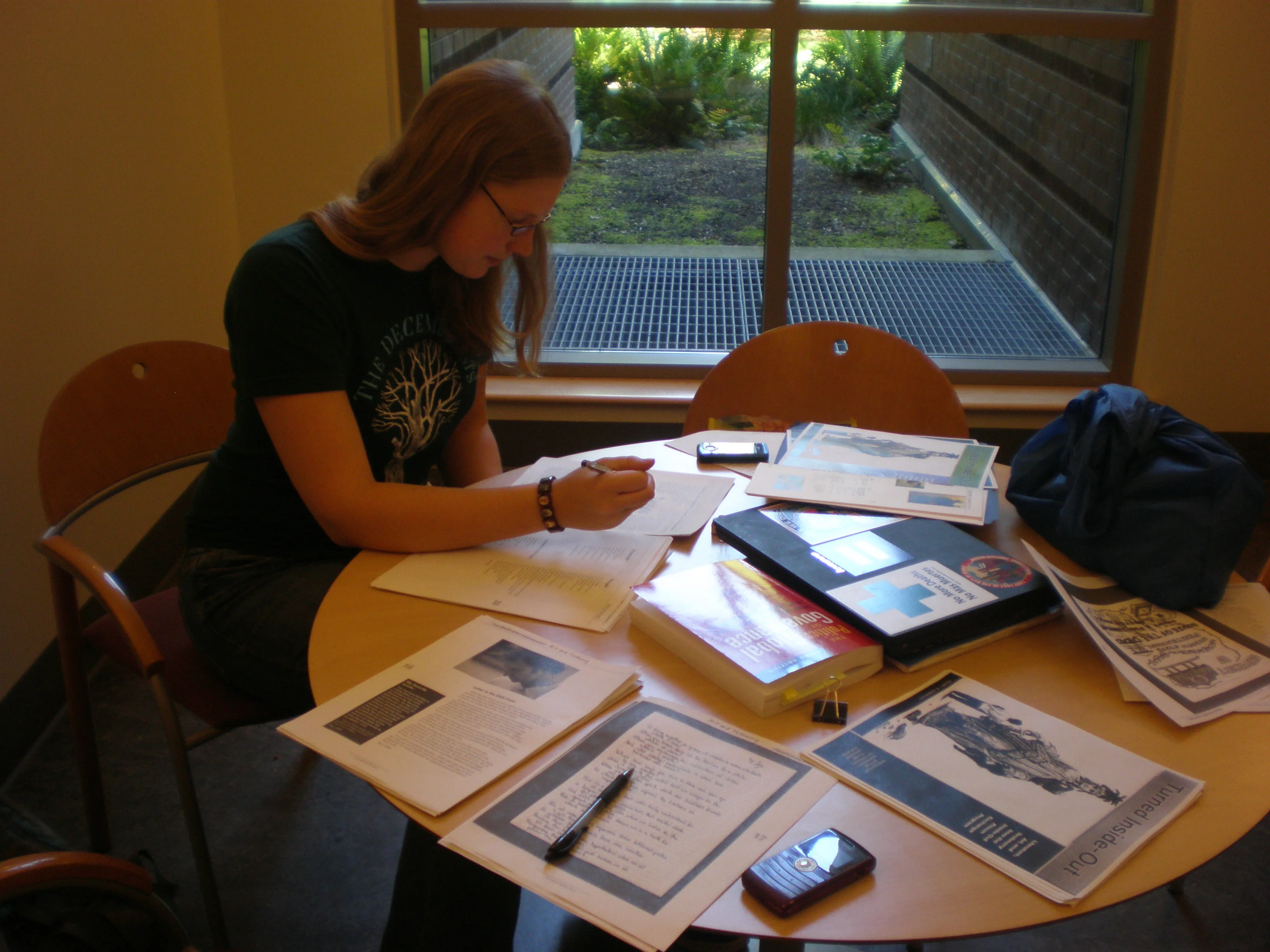Things I Had to Learn in College: Grocery Shopping
/Grocery shopping: one of those grown-up tasks that sneaks up on you in college.
One of the weird things about leaving home to go to college is that there’s an awful lot you have to learn and acclimatize to all at once. Not only do you have to adapt to a new style of teaching and learning, but you also are thrown into being in charge of maintaining your own life. I grew up doing chores, but my folks did a lot of looking after me. So I arrived at college knowing how to vacuum and wash dishes, but not how to do a myriad of other “grown up” things. I had to learn on the fly… and with varying degrees of success.
Quite possibly my least favorite errand (other than laundry) is buying groceries. I never knew how much I needed (the first time I bought milk for myself I got two gallons, because that’s what Mom always did at home to accommodate my little sister’s obsessive milk consumption. Needless to say, more than a gallon went bad before I got to it), and I felt completely overwhelmed by options, brands, and prices.
It turns out that grocery shopping is just something you get good at in time. But there are loads of tips and general good practices that can go a long way in making the chore less obnoxious and more efficient.
My bare-bones basic recommendations for grocery shopping
1. Stock essentials
What ends up on the essentials list will be different for every person. But grocery shopping, cooking, and the basics of living a grown-up life will be greatly improved if you figure out a set of basic essentials (preferably non-perishable or long-lasting) and always have these on hand. These are the unquestionable items you get each time you go to the store, and which should be a constant in your kitchen cupboards. For me these are:
The Non-Perishable Essentials
- Pasta
- Pasta sauce
- Rice
- Beans (black beans and kidney beans) in cans
- Frozen veggies
- Canned tomatoes, corn, and fruit
- Quinoa
- Cereal
Upon these basics, I run my life. In various combinations these foods keep me decently healthy and low-maintenance, low-cost fed. All fancier or more complicated foods cycle into and out of my life, but these few are the essentials.
Figure out a few simple meals you can cook with low-cost, long-lasting foods. Then always keep them on hand. This will make your life much, much easier.
2. Shop in bulk
Buying in large quantities means fewer shopping trips and (usually) cheaper prices. For most of my adult life, I have shopped without the benefit of a car, which makes this tip tricky. When you get the chance, shop in bulk. Things to consider:
- Expiration dates/how much you can use before something goes bad
- Storage (especially if you share a refrigerator, you need to take bulk storage into account before you buy that super-cheap 96 pack of yogurts
- Do you actually like it? If you’re about to buy 30 packages of something, you should probably make it a food/brand/flavor you’ve tried before and know you like.
3. Create buying habits
I’m sure some people make spreadsheets or web indexes or all kinds of tech solutions to knowing the “right” price for food items and the preferred places to find them. The key strategy is to just start paying attention. Learn what those staples cost in different places, and which brands taste the best to you. This is hard at first. I remember feeling so foreign the first time I walked through a grocery trip without a responsible adult telling me which staples to pick from the dozens of size/brand/flavor/organic/nutritional/low-sodium/etc options I was confronted with. Grocery shopping in new countries and contexts brings this all crashing down in confusion again: what are these weird categories of milk? Which salad cream is the best? And for the love of all that’s holy could we not call salad dressing salad cream?
Once you establish habits and a baseline knowledge, you can make educated decisions about changing them. Maybe there’s a new variety of the cereal you always buy, or there’s a sale for a different kind of cheese. The thing (and maybe I’m alone in this, but I suspect not) is that there is just too much to make a decision with each and every food item you need to purchase. Go for the default on most of your groceries. Then get creative with just one or two.
4. Make a list
I hate grocery lists. I don’t know why, but I do. I would honestly rather forget an essential item than write it all down.
That being said, grocery lists are generally a good idea. Do as I say, not as I do. Write a list, tick items off the list, and go home with what you came for.
5. Tips for specific food purchases
Fresh fruit and veggies
Learn what ripe fruit looks/smells/feels like. Know how long it will keep at home, and how long you’ll have to wait before you can eat it. This will take some practice and is greatly facilitated by some guidance from someone who knows what they’re doing. Ask for help sometime, either from a friend or from someone at the store (I know this can be hard in our digital age, but it could make a huge difference in your food purchases to actually ask a store employee for help). A ripe plum feels different from a nearly-ripe plum. A flavorful tomato looks and smells different from one that will essentially just take up space on your plate.
This is a learning curve. But one well-worth learning so you can eat tasty produce.
Being a responsible consumer
The origins of the foods and products we consume matter. They impact our physical health and the health of our communities—from the conditions of farmers to the future earth-wide systems of climate and environmental health.
This is not the place for me to discuss these issues at length. If you care about these issues, there are fabulous resources available to you online and in books (one of my favorites is Animal, Vegetable, Miracle by Barbara Kingsolver).
My brief advice on this issue is to be a responsible consumer, but to not let this overwhelm you. Pick products and issues to care about and take the extra time and purchasing decisions to reflect your values. The food you put into your mouth has traveled some distance to get to you. It has had various substances sprayed on it. The hands that planted, weeded, and picked your food belong to people with their own lives and experiences. There are a myriad of environmental, nutritional, and human rights questions to consider with every single purchase we make. Pick a few that feel important to you. Maybe it’s avoiding products that were tested on animals, or deciding to shop at farmers’ markets in the summer (for your health and the benefit of the farmers). Maybe it’s choosing fair trade coffee or cutting out certain kinds of fish that are unsustainably harvested.
What I’m trying to say is that you should pay attention to your purchases and what those decisions are reinforcing in the economy. But you cannot do this for everything you consume. Educate yourself about the issues you care about, and do what you can to shop in accordance with those values. One step (or product) at a time.
6. Avoid Impulse Buys
Allow yourself one treat per shop. Have your list of essentials and your routines in mind. Stock up on non-perishables and on good-for-you vegetables. Get the bulk of your shopping done.
Then get yourself one treat for having made it this far.
“Treat” is in the eye of the beholder. I used to joyfully anticipate buying $4 worth of deli prosciutto with every big shopping trip. Or swap that out for a jar of insanely expensive but ridiculously delicious sauce (Oregonians: Yumm Sauce. I’ll say no more).
The trick is to limit how many things you grab to just the one. Impulse buys can destroy a budget and leave you with lots of purchases you never intended to make.
Grown-ups buy groceries. But they don’t have to like it. I hope this helps ease the unlovely process of becoming a shopper. Welcome to college… now get out there and buy some fruit.
I hope you liked this post--let me know what you think in the comments section below!




















